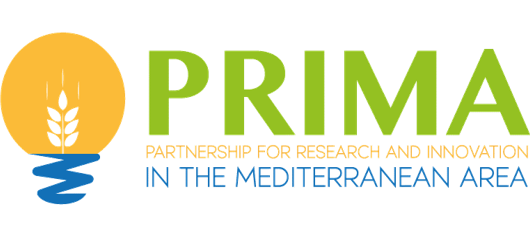In areas with scarce water resources, population growth and climate change scenarios will mean that there is increasingly less water available for agricultural activity. Thus, optimizing crop irrigation water management is an absolute necessity. To address this situation, the SUPROMED project (sustainable production in water-limited environments of Mediterranean agro-ecosystems), available in an online platform, brings together a series of models and methodologies designed to promote more efficient management of water, energy and fertilizers. A two-year trial (2020–2021) was implemented in the Castilla-La Mancha region (Spain), with the aim of showing the effectiveness of SUPROMED as a farm management support tool. The trial was conducted on two of the region’s most important crops (oats and garlic). A series of productive, economic, and environmental key performance indicators (KPIs) were analyzed to measure the impact of transferring MOPECO (model for the economic optimization of irrigation water use at farm level), the irrigation scheduling model integrated in the SUPROMED platform, to farmers. In 2020, the management plan proposed by SUPROMED achieved a higher yield for oat than that generated by traditional management, using 40% less water. In the case of garlic, the same yield was obtained, using 30% less water. Gross margin and gross economic irrigation water productivity were improved for both crops. In 2021, one of the selected farmers was trained to use the SUPROMED platform to work with garlic crop. This management improved most of the KPIs analyzed compared to previous management without the SUPROMED platform, obtaining similar results to those obtained by SUPROMED in 2020. The results demonstrate that the tools and models included in SUPROMED have been properly adapted and can be easily used by farmers, improving the economic and environmental sustainability of Mediterranean agroecosystems. © 2022 by the authors.
Key words: irrigation scheduling; key performance indicators; MOPECO model; semi-arid areas; water productivity
In the Texas High Plains (THP), groundwater resources for irrigation are declining because of aquifer depletion and reduced well yield. Inability to meet peak water demands of maize under constrained irrigation capacities decreases yield and profitability. The MOPECO crop model, calibrated for the THP, was adapted to simulate maize water use and yield under center pivot irrigation to evaluate water allocation strategies under limited irrigation. Simulations were carried out over a range of irrigation capacities (3 – 12 mm d-1 for a 50.9 ha area), initial soil water contents, and application depths with irrigation allocated to a fraction (0.5 – 1.0) of the pivot area. Fractional water allocations were achieved by withholding irrigation from circular sectors or from outer spans with unirrigated fractions in fallow or planted to dryland cotton. These strategies were evaluated for growing seasons characterized by typical meteorological years with average (TMY1), average to above average (TMY2), and below average (TMY3) precipitation. Preseason irrigation had little to no influence on grain yield at irrigation capacities ≥ 5 mm d-1. At irrigation capacities ≤6 mm d-1 under TMY1, marginally greater yields 50.9 ha-1 were simulated when a fraction was irrigated. For irrigation capacities ≤8 mm d-1 under TMY1, reducing the irrigated area was the most prudent option to optimize net returns. As irrigation capacities increased from 4 to 8 mm d-1, the irrigated fraction that maximized net returns increased from 0.5 to 0.9. Concentrating water generated greater net returns because of greater irrigation water productivities and lower seed and fertilizer costs. Compared with fallow, planting cotton in the unirrigated portion increased net returns except in years with a seasonal drought (TMY3). Because greater irrigation volume did not always increase net returns, there is an opportunity to both increase profitability and conserve water by irrigating a fraction of the area.
To optimize the irrigation scheduling of field crops to maximize irrigation water productivity requires expert knowledge of the crop development and its productive response to water deficit. Implementing this idea with commodities such as barley, whose current global profitability is low, and, more specifically, in areas where the availability of water resources for irrigation is limited, requires a proper decision support system. In this research, AquaCrop and MOPECO models were used to compute and compare both the crop-water production and irrigation water productivity functions generated by several irrigation strategies provided by each model for the typical irrigated crop barley grown in the area. Furthermore, we evaluated both models’ performance with a 3-year field experiment applying the methodology of optimized regulated deficit irrigation for limited volumes of irrigation water (ORDIL) in barley crop. The results obtained from the production functions show that gross irrigation water depths (GIWD) of more than 310 mm can be useful to attain the potential crop yield, depending on the criteria considered to generate the irrigation scheduling. However, with less GIWD available, the simulated barley development was subjected to water deficit, leading to a reduction in both crop yield and irrigation water productivity. Thus MOPECO simulated higher crop yields and irrigation water productivity values than those obtained by AquaCrop, being between 16% and 27% for crop yields and between 8.0% and 27.5% for irrigation water productivity, under similar GIWD levels. These differences are mainly due to how the irrigation strategies are outlined in the two models and the different evapotranspiration methodologies they deploy. Finally, both models provided performed appropriately in simulating final crop yield (errors lower than 0.50 × 103 kg ha−1), as well as canopy cover and aboveground biomass evolution, in the case of AquaCrop, whose goodness of fit indicators were close to 0.90 or higher. In terms of crop evapotranspiration, AquaCrop simulated a 12% higher average value than MOPECO. It can be concluded that both models are complementary, and their use will depend on the necessities of the final user. Thus, MOPECO offers a wider range of irrigation strategies, while AquaCrop offers a more detailed information about the physiological response of the crop during its development, being the results of the simulations accurate enough in both models. © 2021 Elsevier B.V.

